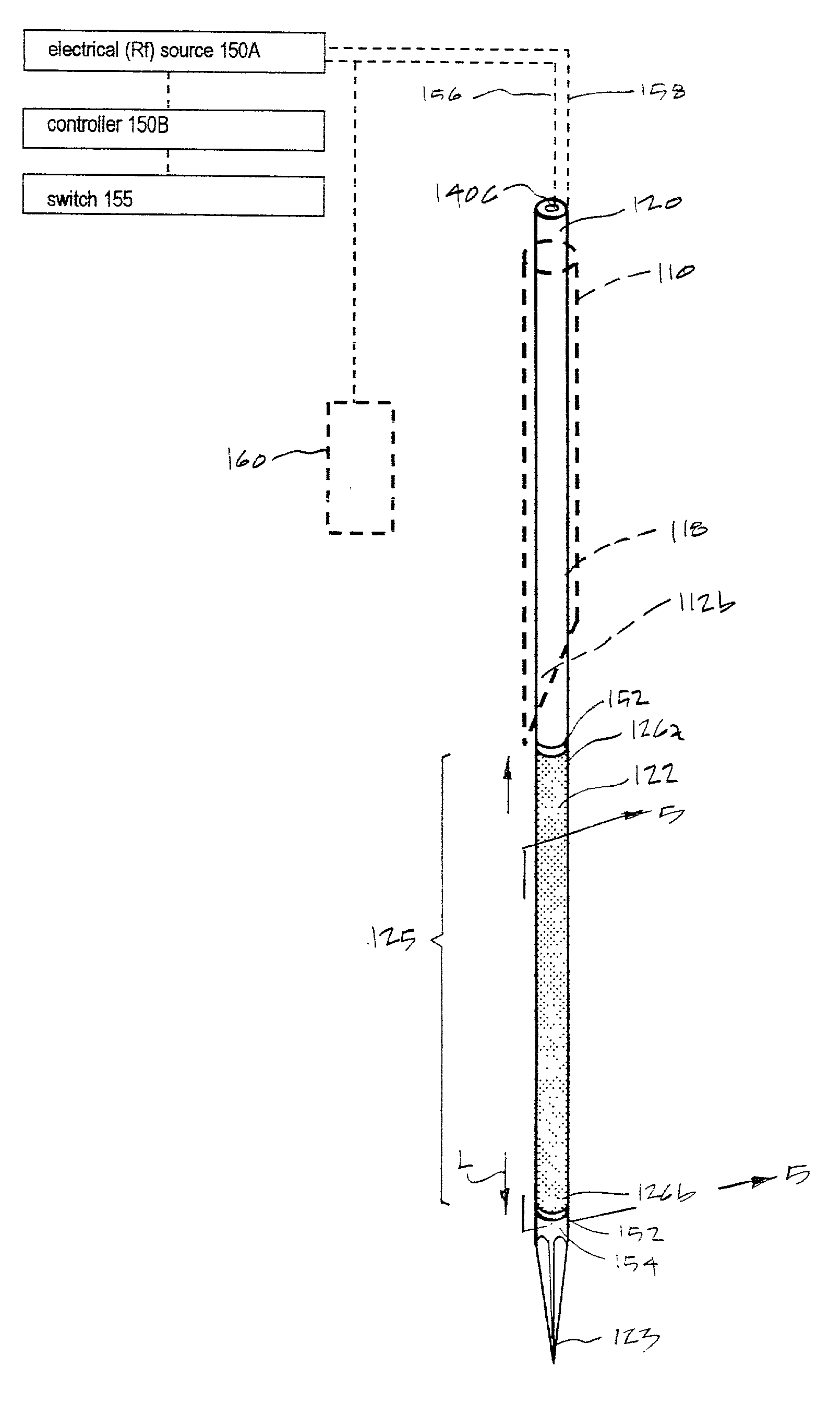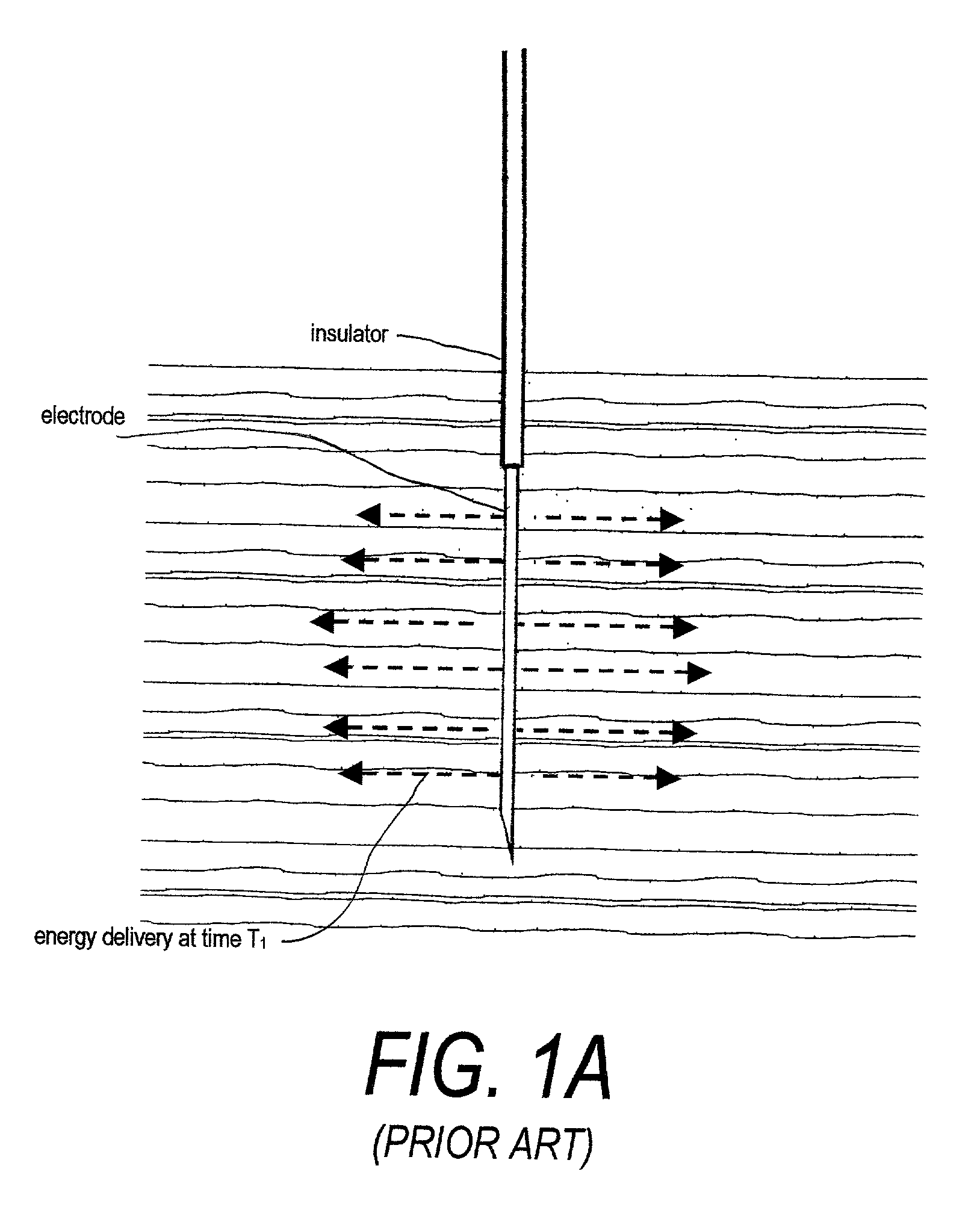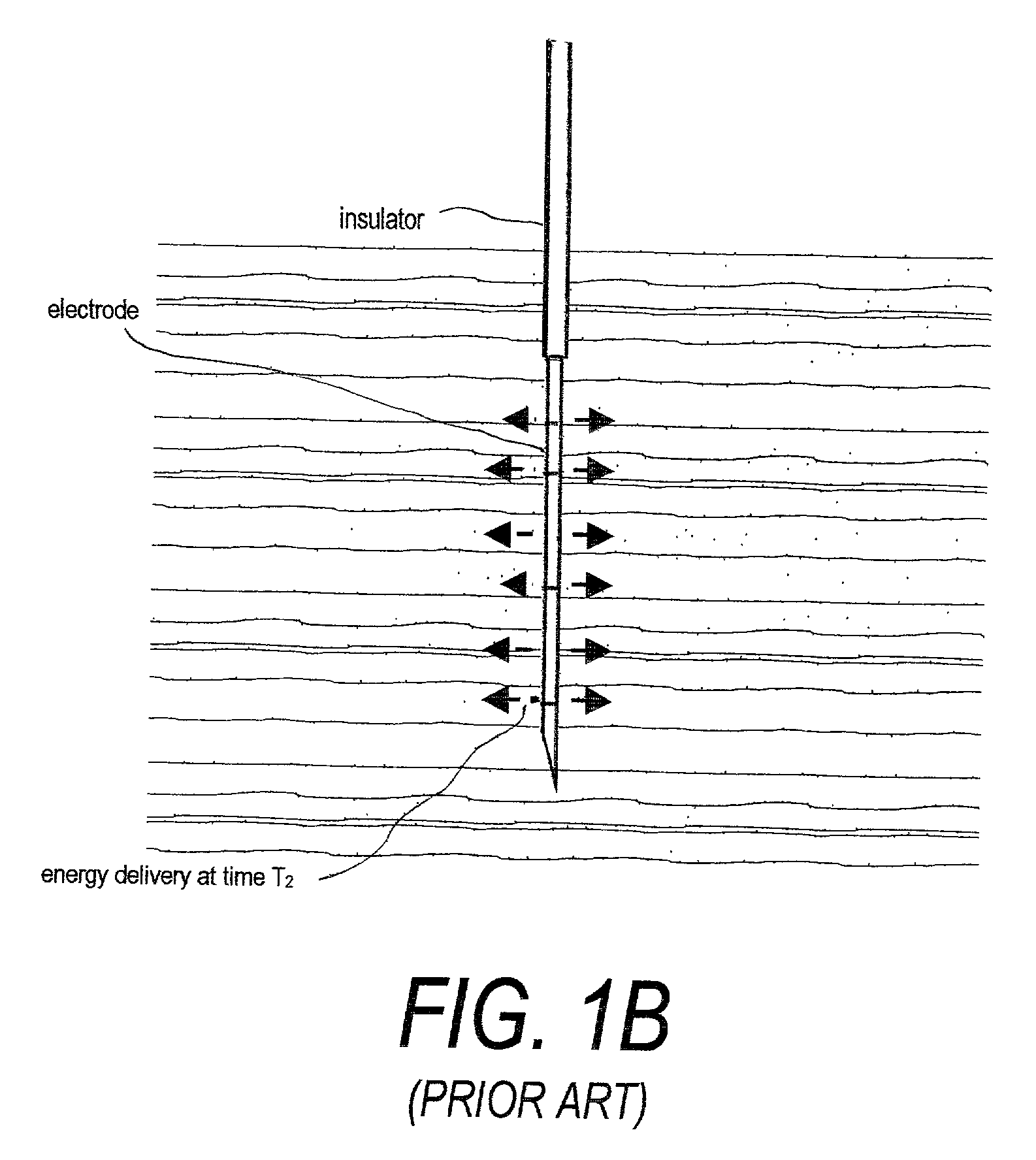Electrosurgical working end for controlled energy delivery
- Summary
- Abstract
- Description
- Claims
- Application Information
AI Technical Summary
Benefits of technology
Problems solved by technology
Method used
Image
Examples
Embodiment Construction
[0049] 1. Type "A" probe for tumor ablation. An exemplary Type "A" probe 100 of the invention is illustrated in FIGS. 2 and 3 that is adapted for energy delivery to tissue, such as a targeted benign or malignant tumor. The probe 100 includes a proximal handle portion indicated at 106 and an introducer portion 110 that can be rigid or flexible in any suitable diameter. For example, the introducer portion 110 can be a diameter ranging from about 1 mm. to 5 mm. for use in percutaneous procedures or endoscopic procedures. The introducer portion extends from a proximal end 112a to a distal end 112b relative to longitudinal axis 115 and defines a bore 118 extending therethrough. The distal termination 112b of introducer 110 can be sharp for tissue penetration, as shown in FIGS. 2 and 3. In another embodiment, the introducer 110 can have a rounded distal end for introduction through a body passageway or lumen, such as an elongate catheter for endoluminal introduction. In another embodiment...
PUM
| Property | Measurement | Unit |
|---|---|---|
| Angle | aaaaa | aaaaa |
| Angle | aaaaa | aaaaa |
| Temperature | aaaaa | aaaaa |
Abstract
Description
Claims
Application Information
 Login to View More
Login to View More - R&D
- Intellectual Property
- Life Sciences
- Materials
- Tech Scout
- Unparalleled Data Quality
- Higher Quality Content
- 60% Fewer Hallucinations
Browse by: Latest US Patents, China's latest patents, Technical Efficacy Thesaurus, Application Domain, Technology Topic, Popular Technical Reports.
© 2025 PatSnap. All rights reserved.Legal|Privacy policy|Modern Slavery Act Transparency Statement|Sitemap|About US| Contact US: help@patsnap.com



